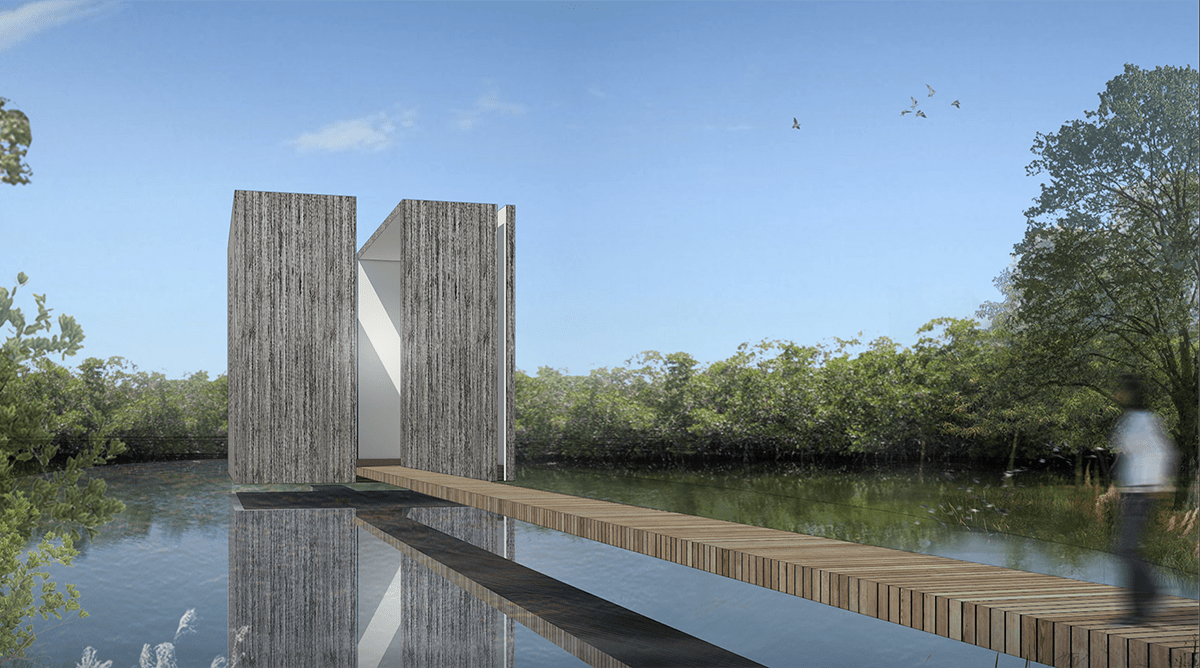
Chaiyasit Dankittikul / Thailand





The International Mangrove Botanical Garden Project in Honor of King Rama IX was designed and initiated in 2019. This project was developed by the Ministry of Natural Resources and Environment, through the Department of Marine and Coastal Resources, in collaboration with the National Legislative Assembly’s Committee on Natural Resources and Environment.
The core concept of the project is to utilize approximately 518 rai (about 205 acres) of mangrove forest located in Ban Samet Ngam, Nong Bua Subdistrict, Mueang District, Chanthaburi Province, for the benefit of society. The project also aims to conserve the mangrove forest in this area for sustainable long-term preservation, while simultaneously honoring His Majesty King Bhumibol Adulyadej the Great.
The Faculty of Architecture at Silpakorn University, particularly the Department of Landscape Architecture, was assigned to carry out the site design, master planning, architectural design, and landscape architecture work. The goal is to create the world’s first international mangrove botanical garden, showcasing mangrove species from around the globe.
In addition, it will serve as a living museum, a significant research and educational center for botanical studies, welcoming researchers and visitors, both domestic and international. The area will also be a tourist attraction and a recreational destination for the public.
The guiding design philosophy emphasizes preserving as much of the original mangrove ecosystem as possible, integrating buildings, walkways, and other infrastructure into the available natural spaces.
One symbolic design element is a waterway shaped like the Thai numeral “9” (๙), symbolizing abundance and the rich biodiversity of the mangrove ecosystem. This waterway serves as the main axis of the master plan, beginning at the northern edge of the site and flowing southward, connecting with a natural watercourse — a tributary of the Chanthaburi River.
This follows the area’s natural drainage pattern and functions as both an irrigation and drainage system for the botanical garden, while also serving as a scenic water route for eco-tourism activities.